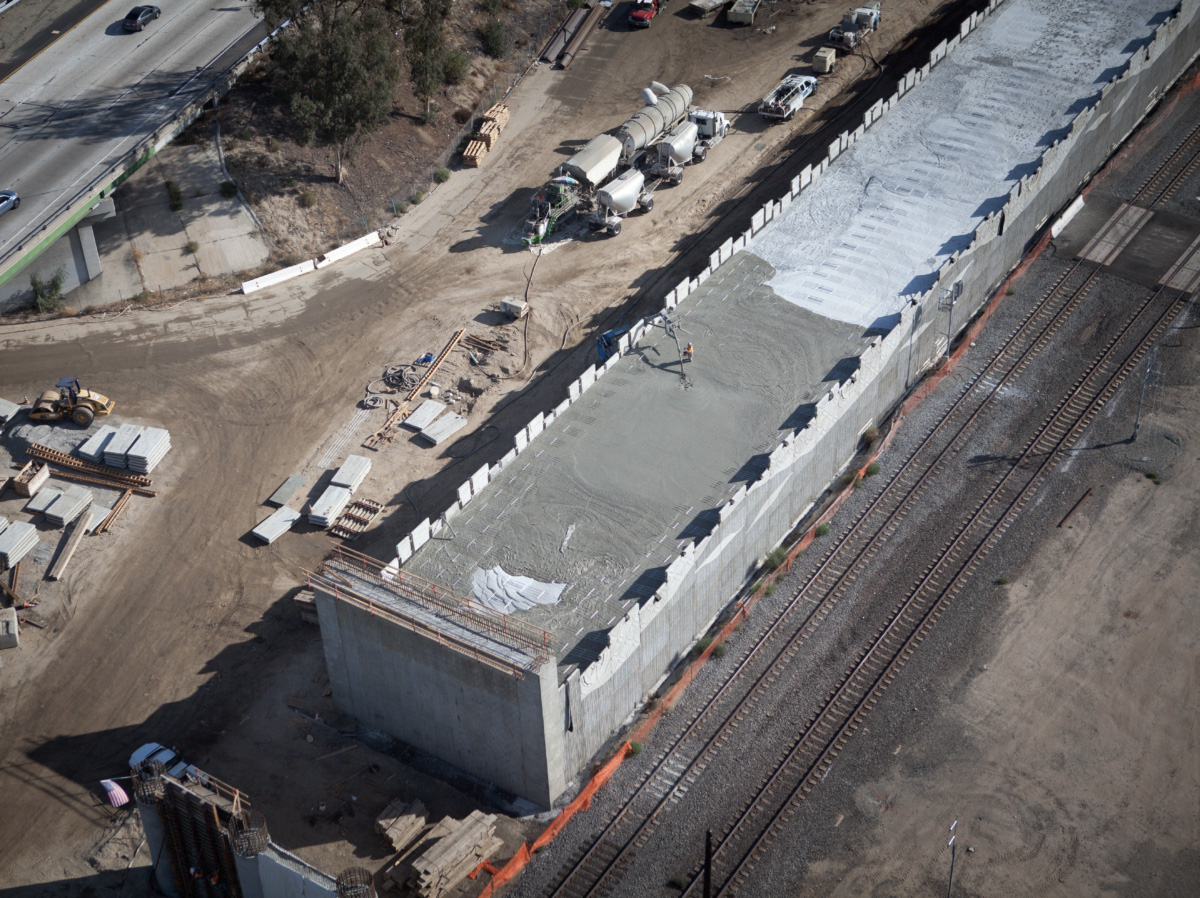The Unique Properties of Cellular Concrete
Lightweight concrete has been used in construction for more than 3,000 years, with volcanic ash serving as fine aggregate. Over the millennia, advances in technology and new materials have led to progressive increases in strength, durability, placement capacity, and consistency. All these advancements have led the way to lightweight cellular concrete (LCC).
An excellent material for mass lightweight fills, thanks to its very low unit weights, LCC creates a self-supporting mass. Once cured, embankments of lightweight cellular concrete can stand on their own, reducing – and even eliminating – lateral earth pressure on walls.
Lightweight cellular concrete’s low density reduces earth pressure, minimizes dynamic forces, mitigates settlement, and absorbs earthquake forces in subsurface structures. On top of being lower cost than traditional ground improvement alternatives, LCC fill has the benefits of significant time savings, settlement uncertainty reduction (or elimination in some cases), and ease of construction.
How’s It Work?
The production of lightweight cellular concrete takes place at the job site, with bulk cement trucked in and batched on a truck-mounted plant to produce neat slurry. It’s then injected with preformed foam to produce cellular concrete. One portable LCC batch plant can produce up to 2,000 cubic yards a day.
The foam looks like shaving cream and is varied in quantity to control the unit weight of the lightweight cellular concrete. Air voids are established in the material via the introduction of either a protein-based or synthetic-based foaming agent that reacts mechanically and chemically with the other components to entrap the air, and can produce cast density as low as 20 pounds per cubic foot.
Density and strength are generally positively correlated:
20 lb./cu.ft. material breaks around 30 psi at 28 days; and
90 lb./cu.ft. material will break over 2,000 psi at 28 days.
Lightweight cellular concrete is similar in unit weight to foamed glass aggregate, while not requiring any compaction, or massive onsite stockpiles. Plus, cellular concrete will not dissolve if exposed to petroleum products.
The Benefits Continue
In today’s modern construction environment, schedules have gotten shorter, site footprints have gotten smaller, and access is nearly impossible in some situations. One solution to these challenges is a flowable fill option, and LCC is just that. It can easily be pumped substantial distances, hundreds, if not thousands of feet, based on simple physics; it’s significantly easier to move air bubbles than aggregate.
Another benefit is that it only takes one truckload of bulk cement to produce 120 cubic yards of lightweight cellular concrete, compared to 10+ truckloads of traditional backfill to reach 120 CYs. Reducing that amount of truck traffic – often to confined, high-traffic sites – equates to a great deal of fuel saved and CO2 emissions eliminated.
Where is Lightweight Cellular Concrete being used today?
One project is the I-405 Improvement Project in Orange County. As reported in the November 13, 2021 issue of Innovation Highway, the Orange County Transportation Authority (OCTA) and Caltrans are widening the San Diego Freeway (I-405) between the SR-73 freeway in Costa Mesa and I-605 near the L.A. County line, a stretch of 16 miles. OC 405 Partners (OHL USA and Astaldi Construction) lead the design-build team.
The project features the addition of one regular lane in each direction between Euclid Street and I-605, reconfiguration of 12 interchanges and two major connectors, new concrete entrance and exit ramps, and the reconstruction of 22 bridges. In addition, the project is adding the 405 Express Lanes, which incorporate the existing carpool lanes and add a new lane in each direction between SR-73 and I-605. When completed, I-405 will have a total of two new toll lanes with five to seven general purpose lanes.
Cell-Crete, an innovative national leader in the cellular concrete industry, is currently placing lightweight cellular concrete on the I-405 Project in earth fills for the widening work, new connectors, and widened approaches to new overcrossing bridges. Completing their work in March 2023, Cell-Crete has placed LCC at 55 different locations throughout the project with a total volume exceeding 220,000 cubic yards of Class II and Class IV material.
The OCTA and Caltrans have extensive experience utilizing LCC on highways projects and together continue to improve related standards and monitor LCC’s performance. For example, settlement is monitored routinely on all LCC projects, including the I-405 Improvement Project.

Looking east at the construction of the I-405/SR-73 Express Lane Connector embankment, LCC fill is being delivered through two hoses. The pictured connector is an HOV flyover structure, which required Cell-Crete’s setup to be located in the median between the northbound and southbound lanes of the 405.
California Test 112 was conducted at the I-405/SR-73 express connector embankment.

Thanks to the pinkish exterior cylinder, two California Test 112 Pipe Riser Settlement Devices are clearly visible in the I-405/SR-73 express connector embankment following the LCC fill placement.

Another one of the 55 LCC placements, this one is at the southeast corner of the intersection of I-405 with Magnolia Street in Fountain Valley. Upon completion, the new Magnolia Street Bridge will be wider, with the new pavement built over the LCC fill that was placed between a new concrete retaining wall and the existing Magnolia Street embankment.
To learn more about lightweight cellular concrete fills, watch this video from Practical Engineering: https://youtu.be/t65tbfU9sCI




